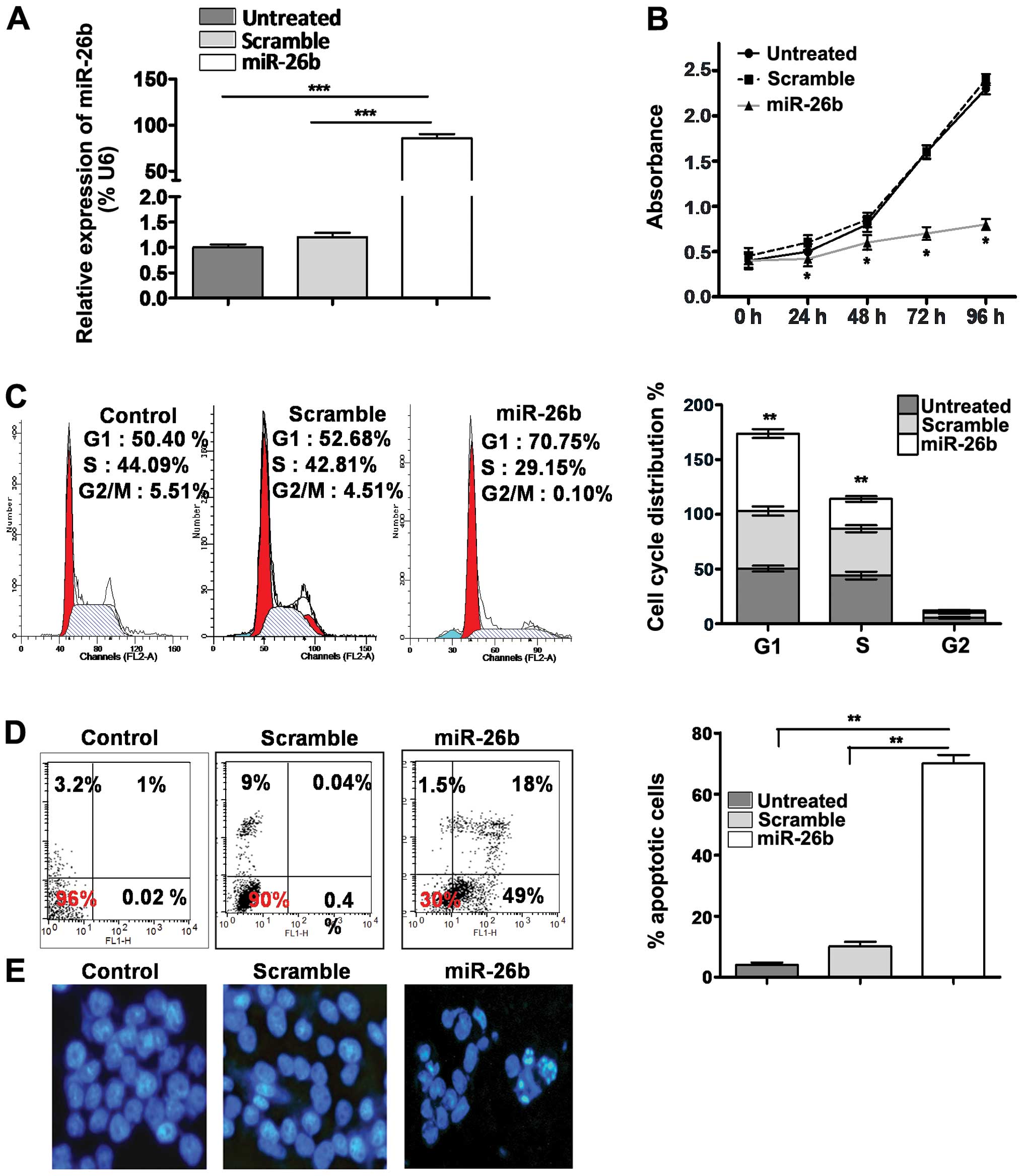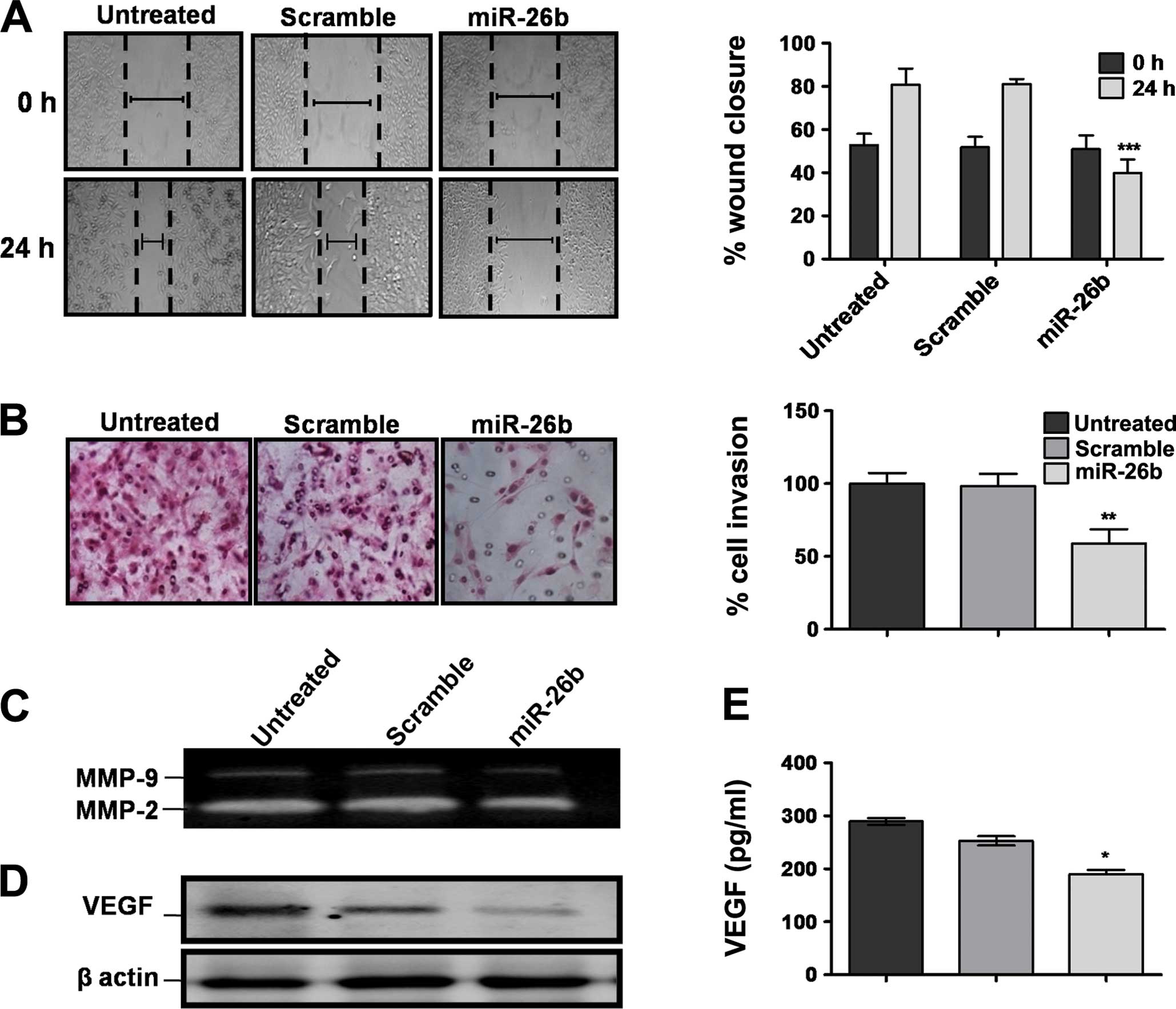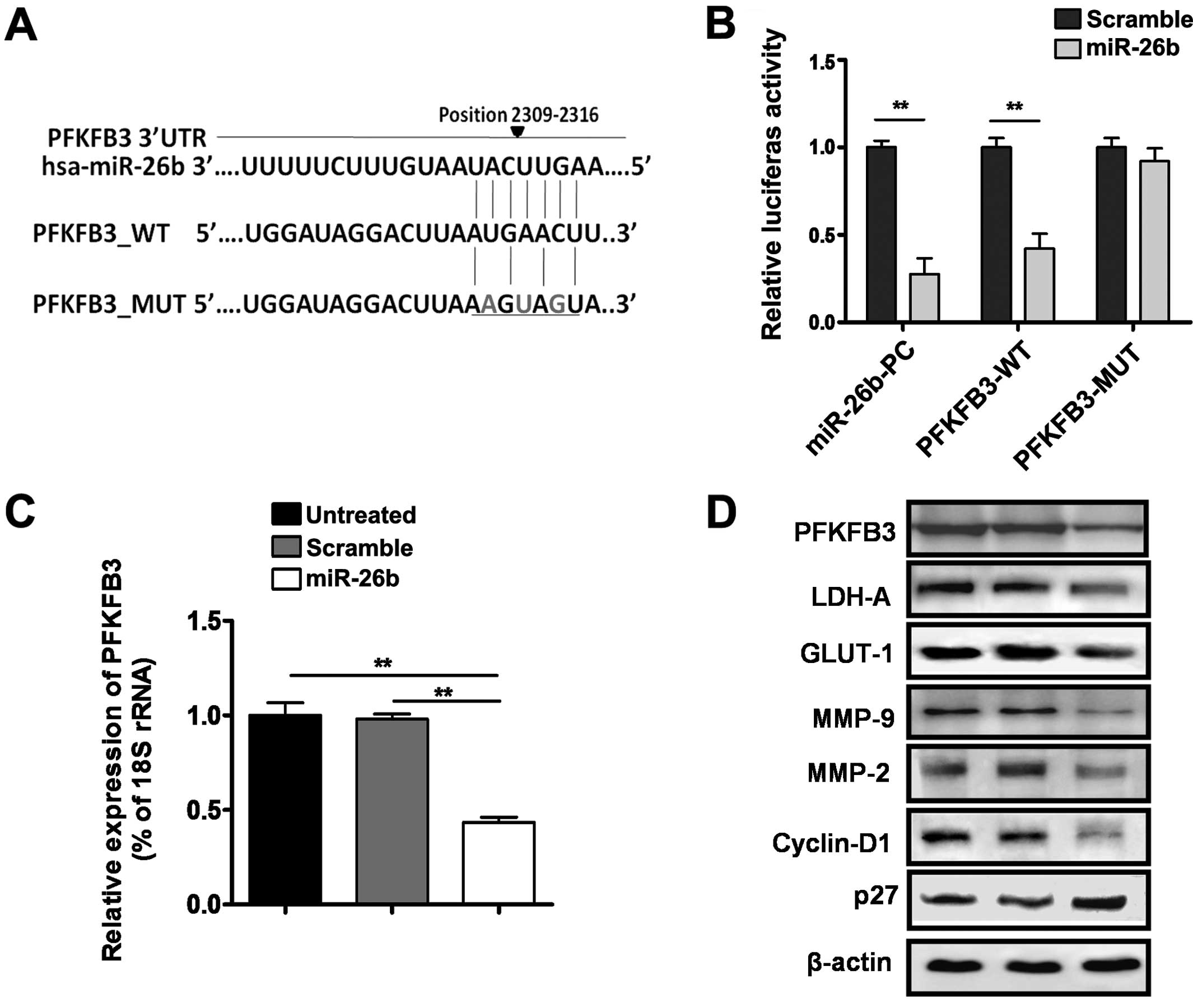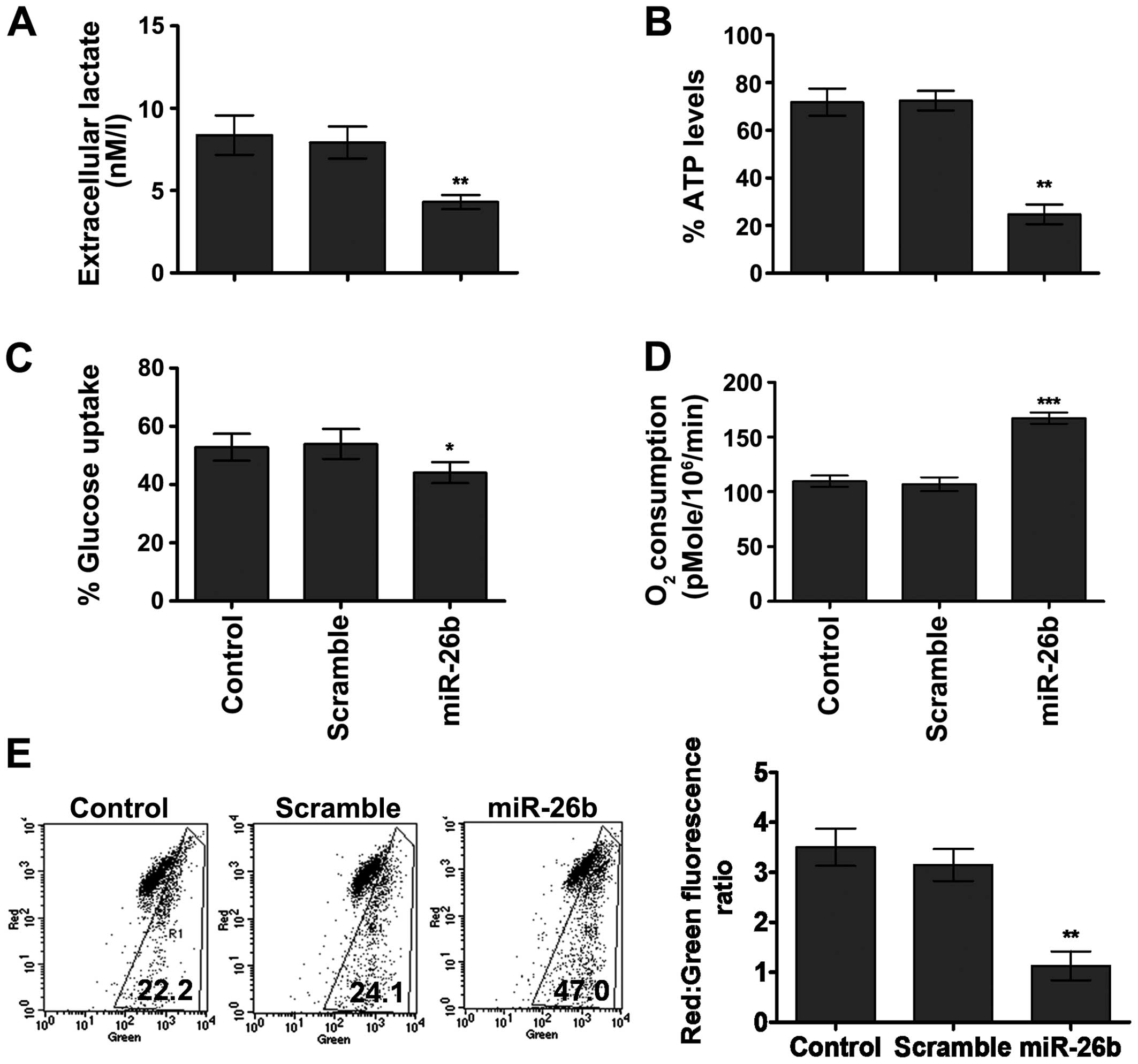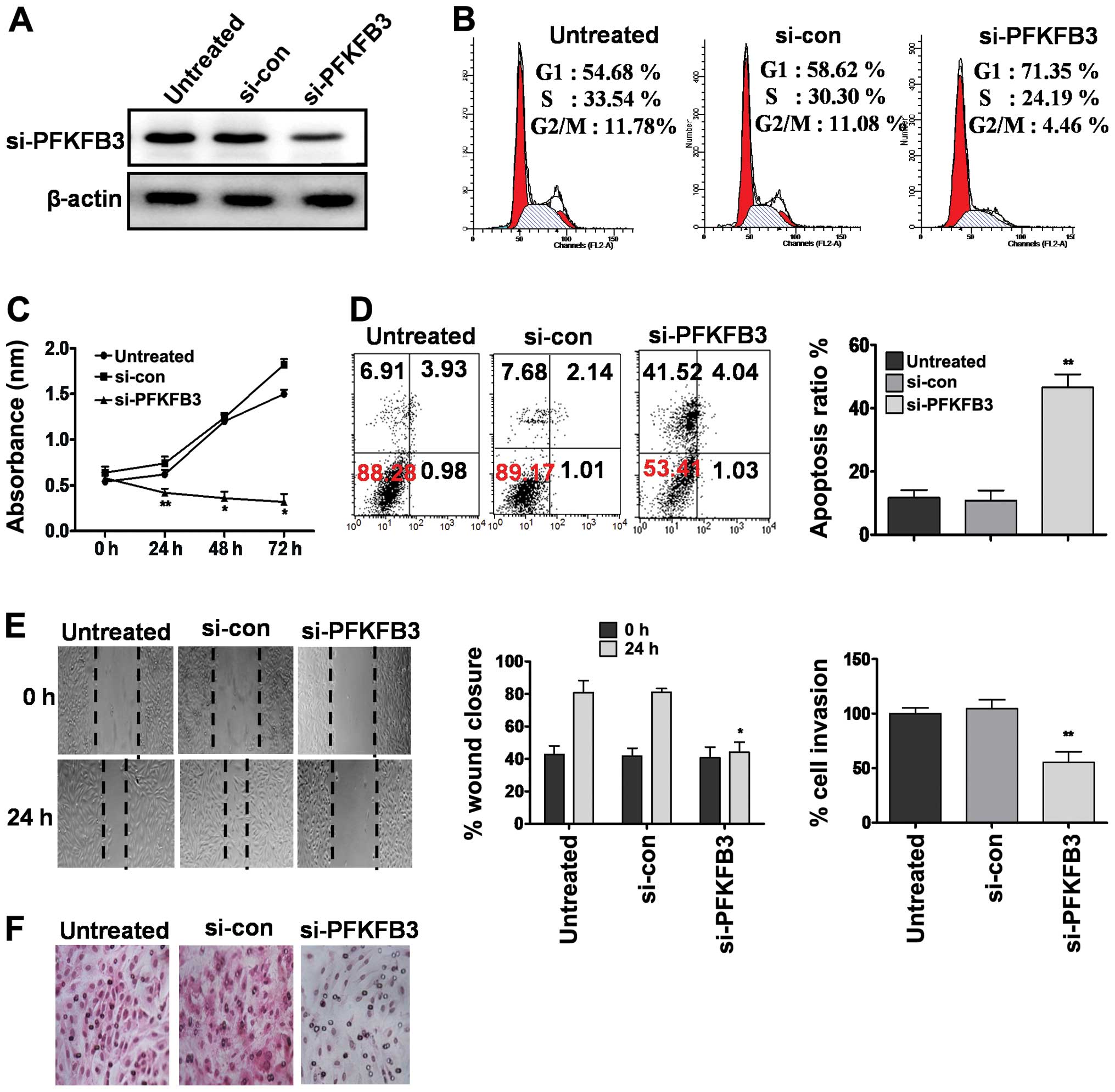|
1
|
Geller DS and Gorlick R: Osteosarcoma: a
review of diagnosis, management, and treatment strategies. Clin Adv
Hematol Oncol. 8:705–718. 2010.
|
|
2
|
Ottaviani G and Jaffe N: The epidemiology
of osteosarcoma. Cancer Treat Res. 152:3–13. 2009. View Article : Google Scholar
|
|
3
|
Marina N, Gebhardt M, Teot L and Gorlick
R: Biology and therapeutic advances for pediatric osteosarcoma.
Oncologist. 9:422–441. 2004. View Article : Google Scholar : PubMed/NCBI
|
|
4
|
Wang Z and Cai H, Lin L, Tang M and Cai H:
Upregulated expression of microRNA-214 is linked to tumor
progression and adverse prognosis in pediatric osteosarcoma.
Pediatr Blood Cancer. 61:206–210. 2014. View Article : Google Scholar
|
|
5
|
Ambros V: MicroRNA pathways in flies and
worms: growth, death, fat, stress, and timing. Cell. 113:673–676.
2003. View Article : Google Scholar : PubMed/NCBI
|
|
6
|
Jones KB, Salah Z, Del Mare S, et al:
miRNA signatures associate with pathogenesis and progression of
osteosarcoma. Cancer Res. 72:1865–1877. 2012. View Article : Google Scholar : PubMed/NCBI
|
|
7
|
Li J, Li X, Kong X, Luo Q, Zhang J and
Fang L: MiRNA-26b inhibits cellular proliferation by targeting CDK8
in breast cancer. Int J Clin Exp Med. 7:558–565. 2014.PubMed/NCBI
|
|
8
|
Ji Y, He Y, Liu L and Zhong X: MiRNA-26b
regulates the expression of cyclooxygenase-2 in
desferrioxamine-treated CNE cells. FEBS Lett. 584:961–967. 2010.
View Article : Google Scholar : PubMed/NCBI
|
|
9
|
Zhang C, Tong J and Huang G: Nicotinamide
phosphoribosyl transferase (Nampt) is a target of microRNA-26b in
colorectal cancer cells. PLoS One. 8:e699632013. View Article : Google Scholar : PubMed/NCBI
|
|
10
|
Gramantieri L, Fornari F, Callegari E, et
al: MicroRNA involvement in hepatocellular carcinoma. J Cell Mol
Med. 12:2189–2204. 2008. View Article : Google Scholar
|
|
11
|
Shapovalov Y, Hoffman D, Zuch D, de Mesy
Bentley KL and Eliseev RA: Mitochondrial dysfunction in cancer
cells due to aberrant mitochondrial replication. J Biol Chem.
286:22331–22338. 2011. View Article : Google Scholar : PubMed/NCBI
|
|
12
|
Giang AH, Raymond T, Brookes P, et al:
Mitochondrial dysfunction and permeability transition in
osteosarcoma cells showing the Warburg effect. J Biol Chem.
288:33303–33311. 2013. View Article : Google Scholar : PubMed/NCBI
|
|
13
|
Van Schaftingen E, Hue L and Hers HG:
Fructose 2,6-bisphosphate, the probably structure of the glucose-
and glucagon-sensitive stimulator of phosphofructokinase. Biochem
J. 192:897–901. 1980.PubMed/NCBI
|
|
14
|
Zawacka-Pankau J, Grinkevich VV, Hünten S,
et al: Inhibition of glycolytic enzymes mediated by
pharmacologically activated p53: targeting Warburg effect to fight
cancer. J Biol Chem. 286:41600–41615. 2011. View Article : Google Scholar : PubMed/NCBI
|
|
15
|
Verghese ET, Drury R, Green CA, et al:
MiR-26b is downregulated in carcinoma-associated fibroblasts from
ER-positive breast cancers leading to enhanced cell migration and
invasion. J Pathol. 231:388–399. 2013.PubMed/NCBI
|
|
16
|
Liao CL, Lin JH, Lien JC, et al: The crude
extract of Corni Fructus inhibits the migration and invasion of U-2
OS human osteosarcoma cells through the inhibition of matrix
metalloproteinase-2/-9 by MAPK signaling. Environ Toxicol. Aug
19–2013.(Epub ahead of print). PubMed/NCBI
|
|
17
|
Sottnik JL, Lori JC, Rose BJ and Thamm DH:
Glycolysis inhibition by 2-deoxy-d-glucose reverts the metastatic
phenotype in vitro and in vivo. Clin Exp Metastasis. 28:865–875.
2011. View Article : Google Scholar : PubMed/NCBI
|
|
18
|
Singh PK, Mehla K, Hollingsworth MA and
Johnson KR: Regulation of aerobic glycolysis by microRNAs in
cancer. Mol Cell Pharmacol. 3:125–134. 2011.PubMed/NCBI
|
|
19
|
Atsumi T, Chesney J, Metz C, et al: High
expression of inducible
6-phosphofructo-2-kinase/fructose-2,6-bisphosphatase (iPFK-2;
PFKFB3) in human cancers. Cancer Res. 62:5881–5887. 2002.PubMed/NCBI
|
|
20
|
Tutar Y: miRNA and cancer; computational
and experimental approaches. Curr Pharm Biotechnol. 15:4292014.
View Article : Google Scholar : PubMed/NCBI
|
|
21
|
Ji J, Shi J, Budhu A, et al: MicroRNA
expression, survival, and response to interferon in liver cancer. N
Engl J Med. 361:1437–1447. 2009. View Article : Google Scholar : PubMed/NCBI
|
|
22
|
Arora H, Qureshi R, Park AK and Park WY:
Coordinated regulation of ATF2 by miR-26b in γ-irradiated lung
cancer cells. PLoS One. 6:e238022011. View Article : Google Scholar
|
|
23
|
Wu N, Zhao X, Liu M, et al: Role of
microRNA-26b in glioma development and its mediated regulation on
EphA2. PLoS One. 6:e162642011. View Article : Google Scholar : PubMed/NCBI
|
|
24
|
Zhao N, Wang R, Zhou L, Zhu Y, Gong J and
Zhuang SM: MicroRNA-26b suppresses the NF-κB signaling and enhances
the chemosensitivity of hepatocellular carcinoma cells by targeting
TAK1 and TAB3. Mol Cancer. 13:352014. View Article : Google Scholar
|
|
25
|
Shen G, Lin Y, Yang X, Zhang J, Xu Z and
Jia H: MicroRNA-26b inhibits epithelial-mesenchymal transition in
hepatocellular carcinoma by targeting USP9X. BMC Cancer.
14:3932014. View Article : Google Scholar : PubMed/NCBI
|
|
26
|
Li J, Kong X, Zhang J, Luo Q, Li X and
Fang L: MiRNA-26b inhibits proliferation by targeting PTGS2 in
breast cancer. Cancer Cell Int. 13:72013. View Article : Google Scholar : PubMed/NCBI
|
|
27
|
Liu XX, Li XJ, Zhang B, et al:
MicroRNA-26b is underexpressed in human breast cancer and induces
cell apoptosis by targeting SLC7A11. FEBS Lett. 585:1363–1367.
2011. View Article : Google Scholar : PubMed/NCBI
|
|
28
|
Zhang B, Liu XX, He JR, et al:
Pathologically decreased miR-26a antagonizes apoptosis and
facilitates carcinogenesis by targeting MTDH and EZH2 in breast
cancer. Carcinogenesis. 32:2–9. 2011. View Article : Google Scholar
|
|
29
|
Ohba T, Cates JM, Cole HA, et al:
Autocrine VEGF/VEGFR1 signaling in a subpopulation of cells
associates with aggressive osteosarcoma. Mol Cancer Res.
12:1100–1111. 2014. View Article : Google Scholar : PubMed/NCBI
|
|
30
|
Palorini R, Votta G, Balestrieri C, et al:
Energy metabolism characterization of a novel cancer stem cell-like
line 3AB-OS. J Cell Biochem. 115:368–379. 2014. View Article : Google Scholar
|
|
31
|
Issaq SH, Teicher BA and Monks A:
Bioenergetic properties of human sarcoma cells help define
sensitivity to metabolic inhibitors. Cell Cycle. 13:1152–1161.
2014. View
Article : Google Scholar : PubMed/NCBI
|
|
32
|
Minchenko A, Leshchinsky I, Opentanova I,
et al: Hypoxia-inducible factor-1-mediated expression of the
6-phosphofructo-2-kinase/fructose-2,6-bisphosphatase-3 (PFKFB3)
gene. Its possible role in the Warburg effect. J Biol Chem.
277:6183–6187. 2002. View Article : Google Scholar
|
|
33
|
Garcia-Cao I, Song MS, Hobbs RM, et al:
Systemic elevation of PTEN induces a tumor-suppressive metabolic
state. Cell. 149:49–62. 2012. View Article : Google Scholar : PubMed/NCBI
|
|
34
|
Manes NP and El-Maghrabi MR: The kinase
activity of human brain
6-phosphofructo-2-kinase/fructose-2,6-bisphosphatase is regulated
via inhibition by phosphoenolpyruvate. Arch Biochem Biophys.
438:125–136. 2005. View Article : Google Scholar : PubMed/NCBI
|
|
35
|
Telang S, Yalcin A, Clem AL, et al: Ras
transformation requires metabolic control by
6-phosphofructo-2-kinase. Oncogene. 25:7225–7234. 2006. View Article : Google Scholar : PubMed/NCBI
|
|
36
|
Clem B, Telang S, Clem A, et al:
Small-molecule inhibition of 6-phosphofructo-2-kinase activity
suppresses glycolytic flux and tumor growth. Mol Cancer Ther.
7:110–120. 2008. View Article : Google Scholar : PubMed/NCBI
|
|
37
|
Yalcin A, Clem BF, Imbert-Fernandez Y, et
al: 6-Phosphofructo-2-kinase (PFKFB3) promotes cell cycle
progression and suppresses apoptosis via Cdk1-mediated
phosphorylation of p27. Cell Death Dis. 5:e13372014. View Article : Google Scholar : PubMed/NCBI
|
|
38
|
Almeida A, Bolaños JP and Moncada S: E3
ubiquitin ligase APC/C-Cdh1 accounts for the Warburg effect by
linking glycolysis to cell proliferation. Proc Natl Acad Sci USA.
107:738–741. 2010. View Article : Google Scholar : PubMed/NCBI
|



